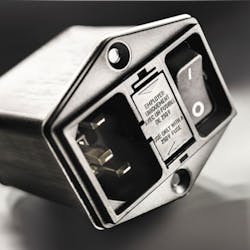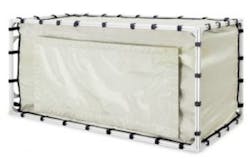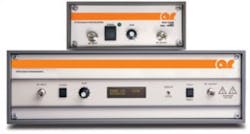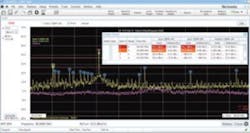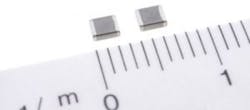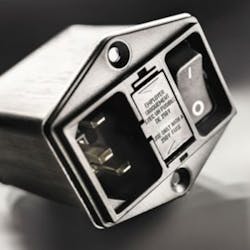In a rapidly evolving wireless electronics market that is headed into 5G and beyond, electromagnetic interference (EMI) has become a growing issue in design engineering. With the manufacturing explosion of electronic devices and the Internet of Things, it’s become a metaphorical EMI jungle out there, and engineers have their work cut out to meet EMC emission requirements and circumvent cost overruns and schedule delays.
Most EMI incidents involve ambient EMI or power-quality problems, whether they are due to emissions, RFI (radio frequency interference), ESD (electrostatic discharge), power disturbances, or self compatibility.
Real-world solutions are necessary for PCs, cell phones, the IoT, railroads and mass transit, military applications, and medical equipment. The challenge for engineers is deepened through increasing clock/edge rates and smaller and smaller component geometries. Critical infrastructure, such as the power grid, is increasingly vulnerable to intentional EMI (IEMI).
With the arrival of Internet of Things and a proliferation of electronic devices that can interfere with each other, designing products to meet EMC emission requirements is critical. For many engineers just starting work on new IoT devices, EMI/EMC testing can be intimidating, and failing compliance testing leads to significant cost overruns and schedule delays. Here is a sampling of new products for testing or shielding for EMI. Also included are power supplies that meet relevant EMC/EMI standards to give you a head start on compliance.
The TekBox TBST120/60/60/2 Shielded Tent provides an economical RF/EMI-attenuated environment for a variety of benchtop “EMI quiet” applications. The TBST-120/60/60/2 is a compact shielded tent, designed to suppress interference from ambient noise during EMC precompliance measurements. With outer dimensions of 4’ x 2’ x 2’, it can accommodate precompliance test equipment such as LISNs or TEM cells, as well as the DUT, yet fit on a test bench. The TBST-120/60/60/2 shielded tent has been designed with two layers of conductive fabric, suspended on rigid aluminum supports, the double-layer design significantly improving the tent’s shielding effectiveness. A filter panel mounted at the side provides one 240-V/10-A AC filter, two 240-V/10-A DC filters, and four coaxial feed-through adapters with screw caps.
The front opening provides access to the test space and is closed using conductive hook-and-loop tape in order to avoid compromising the shielding efficacy. When measuring the conducted noise spectrum of a powered device being tested in an unshielded setup, conducted noise to be measured is often hidden below the ambient noise level, making accurate measurements impossible without eliminating the interference. Applications include wireless device testing, EMC precompliance testing, secure communications, satellite communications, medical equipment shielding, and operator safety. The TekBox shielded solution is now available at less than $2,000. Saelig
Measurement for energy distribution
This provider of test equipment rentals now offers for rent the DOW3000 electronic measuring equipment for energy distribution networks. The DOW3000 is a configurable high-voltage test system that can be extended for slow and fast damped oscillatory waves, impulse voltage test, or any combination. The integrated 32-A three-phase coupling/decoupling network (CDN) has a ratingt of 690 VAC and 500 VDC and enables both slow and fast signals to be directly injected into the device under test. The DOW3000 meets test standards IEC 61000-4-18, IEC 61000-4-10, and ANSI C37.90.1. EMC Partner, available from Advanced Test Equipment Rentals
A family of RF solid-state Class A power amplifiers is suitable for EMC testing, laboratory testing, antenna and component testing, wattmeter calibration, medical/physics research, and more. Each of the “U” Universal Series instruments will instantaneously cover its full frequency range with a single-band amplifier. Models in the family covering 10 kHz to 1,000 MHz offer CW power levels of 1, 2.5, 5, 10, 25, and 50 W. A recently added 100-W model covers 100 kHz to 1,000 MHz. AR/RF Microwave Instrumentation
The EMCVu is an all-in-one solution for EMI/EMC pretesting and troubleshooting. In today’s electronic design environment, about 50% of products fail EMC testing the first time. According to the vendor, EMCVu gives engineers an accurate, convenient, and cost-effective approach to determine if their product designs will pass EMC emission compliance testing on the first try. Precompliance testing reduces failure rates, but introduces its own challenges including difficult and expensive equipment setup, testing accuracy, painful debugging, and a lack of reporting tools. At the core of the new solution are the real-time USB spectrum analyzers, including the RSA306B, which offer the performance of traditional desktop instruments at a fraction of the cost. Powered through USB connection, the small size of the vendor’s real-time USB spectrum analyzers makes it easy to perform EMI/EMC testing outside the lab environment in relatively low-noise environments, such as basements or parking garages. The instruments are controlled by SignalVu-PC software running on a laptop or tablet. For this application, SignalVu-PC has been enhanced with optional EMCVu software to provide precompliance and troubleshooting capability in the same user interface. EMCVu offers an easy to learn wizard with built in support for standards, such as CISPR, and push-button accessory selection and setup. It also facilitates debugging with automated ambient noise capture, multifailure remeasurement, and harmonic markers for in-depth analysis. Users can save experiment results with notes and images into a configurable report in PDF or RTF formats. An all-in-one precompliance solution including an RSA306B USB spectrum analyzer, SignalVu-PC with the EMCVu plugin, near-field probes, a LISN, radiated test antennas, tripod, and cabling is priced at $26,655 US. Tektronix
This vendor has expanded its MAF series of noise-suppression filters with the new MAF2520ASS600C type that is designed especially for LED lighting systems. The new multilayer filter has compact dimensions of 2.5 mm x 2.0 mm x 0.85 mm and features suppression of spurious noise between 20 MHz and 100 MHz that is equivalent with that of larger wire-wound components. The new component has a rated current of 500 mA and a DC resistance of 0.28 Ω (typical). Its impedance at 30 MHz is 3.4 kΩ. Thanks to its operating temperature range of -40 to +125°C, the component is also suitable for use in high-temperature environments. In addition, the new MAF2520ASS600C filter satisfies CISPR 15 standards for LED lighting. Thanks to their reduced energy consumption and long operating life, LED lighting systems have continued to become increasingly popular in a range of applications in homes and buildings. In order to offer additional enhanced value, manufacturers are developing intelligent solutions with networked illumination control systems. The new miniaturized MAF2520ASS600C noise-suppression filter is designed to protect the controllers from the noise generated by the AC to DC LED power supplies. TDK
The new DD14 Series packs functionality into a new generation of compact power-entry modules, combining an IEC C14 appliance inlet with 2-pole switch and 2-pole fuseholder. EMC performance is further enhanced with a depth-saving 2-stage filter. Shielding is optimized by screwing the metal casing of the filter to the panel, using its horizontal or vertical flange. A snap-in filter version eliminates the flange, consuming even less panel space. The DD14 integrates the EMC filter directly in line with the power input. The 2-stage filter design suppresses interference voltages more effectively over a much broader frequency spectrum than single-stage filters, thereby having a positive effect on electromagnetic compatibility. Standard and low-leakage medical filter options are available for use in commercial or facilities ICT equipment. It is compatible with V-Lock retaining cordsets. The DD14 is rated for current levels up to 10 A / 250 VAC according to IEC and 8 A 125/250 VAC according to UL / CSA. It is ENEC and cURus approved. Pricing for the DD14 is about $25 each per 100 pieces. Schurter
SGX Series programmable DC power supplies include onboard intelligent controls that enable sequencing, a constant power mode, and save/recall of instrument settings. In addition, a looping of sequences function makes the SGX suitable for repetitive testing. Users can quickly control the DC supply with the intuitive touchscreen. Function selection and parameter entry can be achieved either by direct selection from the touchscreen or by using the encoder selector button. The control resolution is adjusted by a dynamic rate change algorithm that combines the benefits of precise control over small parameter changes with quick sweeps through the entire range. The SGX product line complies with all EMI, EMC, and safety requirements as well as EU RoHS directives. AMETEK Programmable Power
Synchronous converters
The highly integrated 5-A and 6-A LM73605/6 and 2.5-A and 3.5-A LM76002/3 step-down voltage converters feature an optimized pinout and thermal coefficient to simplify the process of achieving EMI compliance and higher reliability for rugged industrial and automotive power supplies, the vendor reports. The 5-A and 6-A LM73605/6 and 2.5-A and 3.5-A LM76002/3 DC/DC step-down buck converters simplify the process of achieving EMI compliance and high reliability for rugged industrial and automotive applications. The 3.5-V to 36-V LM73605/6 and 3.5-V to 60-V LM76002/3 buck regulators meet and exceed CISPR 25 Class 5 automotive EMC requirements. These regulators’ programmable output switching frequencies can be set either above the AM band, which eliminates AM-band interference and reduces output filter size and cost, or below the AM band to optimize efficiency. The small QFN package with wettable flanks delivers a low thermal coefficient of 7.1°C/W to improve reliability and enables post-solder optical inspection to simplify manufacturing. Optimized package pin placement allows flexibility in board design to improve heat sinking, which minimizes radiated and conducted emissions. Texas Instruments
